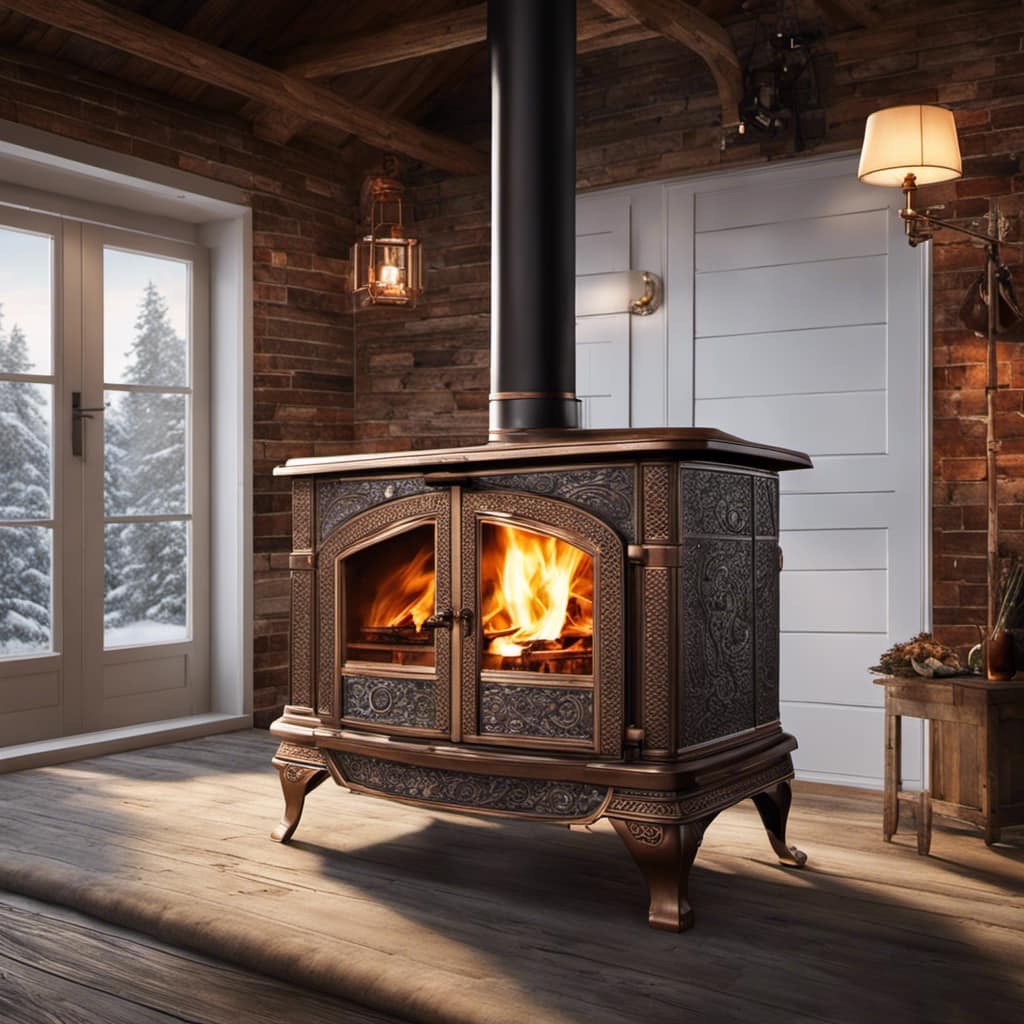Picture yourself snuggling up next to a warm, crackling fire on a cold winter night. With just a few easy steps, you can convert your current fireplace into a wood-burning stove. This modification will not only keep you cozy but also bring a rustic charm to your home.
In this guide, I’ll walk you through the process of installing a wood stove in an existing fireplace, from assessing your fireplace to testing and maintaining your new heating system.
Let’s get started!
Key Takeaways
- Inspect and repair any chimney or flue damage before installation
- Choose the proper size and type of wood stove for the fireplace opening
- Adhere to local building codes and regulations for installation
- Regularly clean and maintain the wood stove and chimney system for safety and efficiency
Assessing Your Existing Fireplace
As I assess my existing fireplace, I realize that it may need some repairs before installing a wood stove. Evaluating safety is crucial to ensure a successful wood stove installation.
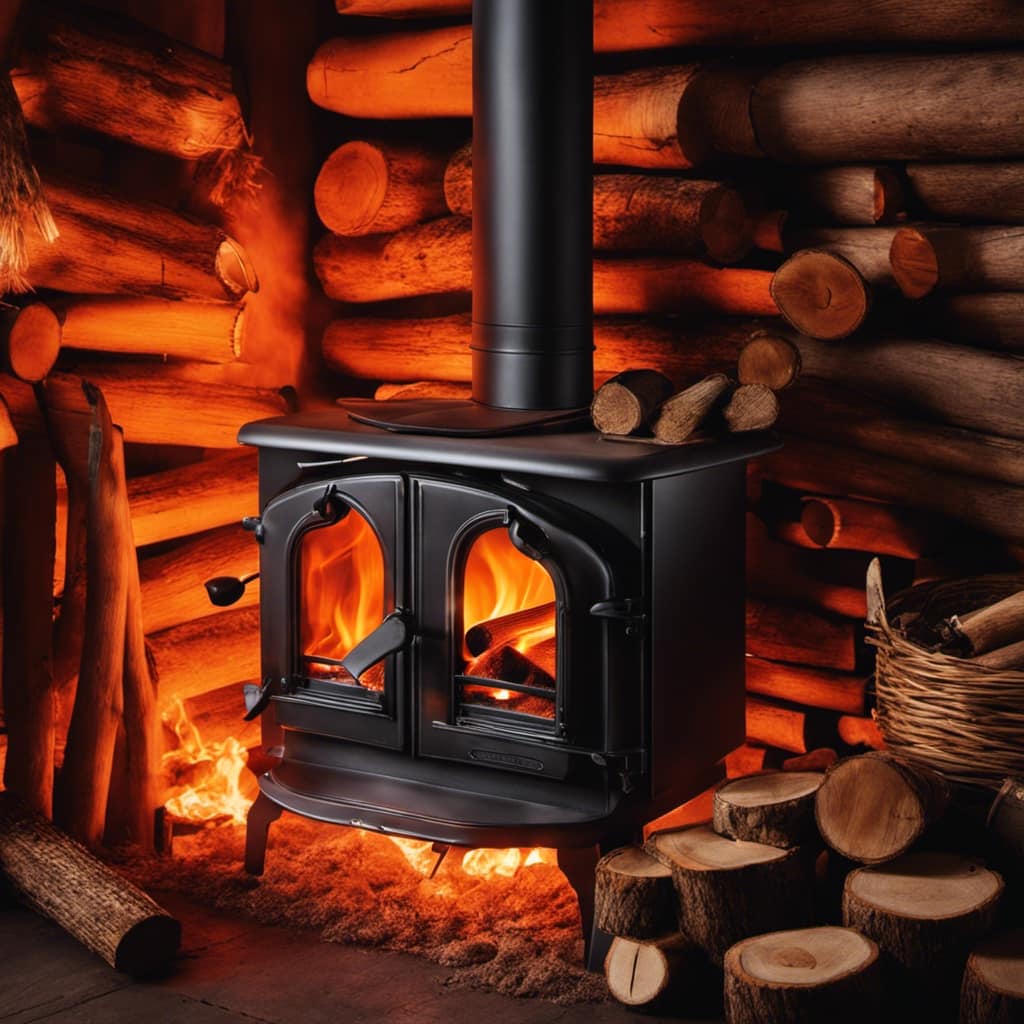
The first step is to thoroughly inspect the chimney and flue for any cracks or damage. Any issues should be repaired by a professional before proceeding.
Next, it’s important to measure the dimensions of the fireplace opening accurately. This will help determine the appropriate size of the wood stove to be installed. Additionally, measuring the depth of the fireplace will ensure that there’s enough space for the wood stove and proper ventilation.
Taking these steps will guarantee a safe and efficient wood stove installation in an existing fireplace.
Determining the Size and Type of Wood Stove
After carefully measuring the dimensions of my fireplace and considering my heating needs, I’ve determined that a smaller, more efficient wood stove will be the best choice for my home.

When choosing the right wood stove, it’s crucial to consider proper ventilation. Wood stoves require a venting system that allows for the safe release of combustion byproducts, such as smoke and carbon monoxide. This can be achieved through the installation of a chimney or a stovepipe.
The size and type of wood stove should be compatible with the existing fireplace opening and the heating requirements of the space. It’s important to consult with a professional to ensure proper installation and to adhere to local building codes and regulations.
Preparing the Fireplace and Surrounding Area
I always make sure to thoroughly clean and clear the fireplace and surrounding area before installing the wood stove. This is an essential step to ensure a safe and efficient wood stove installation.
Here are four important tasks to complete during the cleaning process:
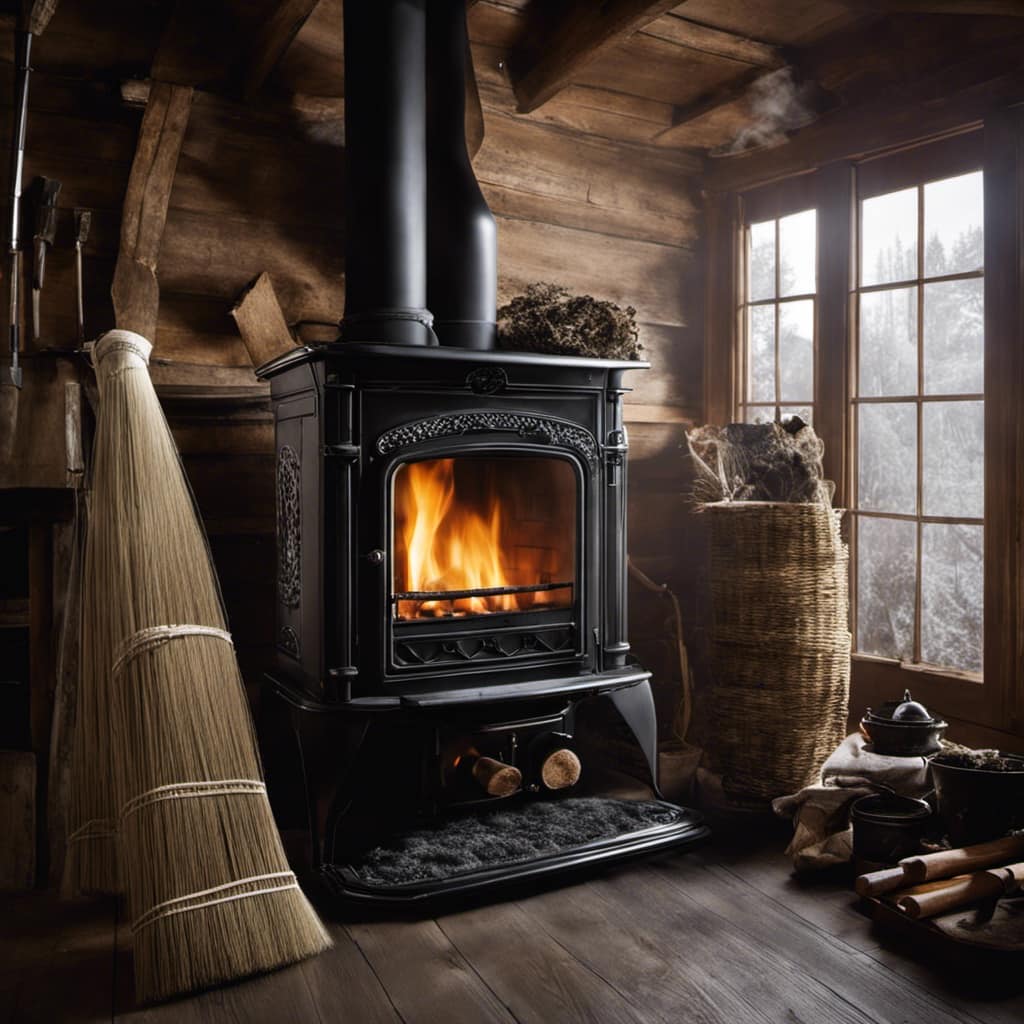
-
Remove all debris: Sweep out any ashes, soot, or leftover wood from the fireplace. Use a brush or vacuum to remove any loose dirt or dust.
-
Clean the chimney: Hire a professional chimney sweep to inspect and clean the chimney. They’ll remove any creosote buildup or blockages, ensuring proper ventilation.
-
Check for cracks or damage: Inspect the fireplace and surrounding area for any cracks or damage. Repair any issues before proceeding with the installation.
-
Clear the surrounding space: Remove any flammable materials, such as furniture or curtains, from the immediate area around the fireplace. This will help prevent accidents and ensure the safety of your wood stove installation.
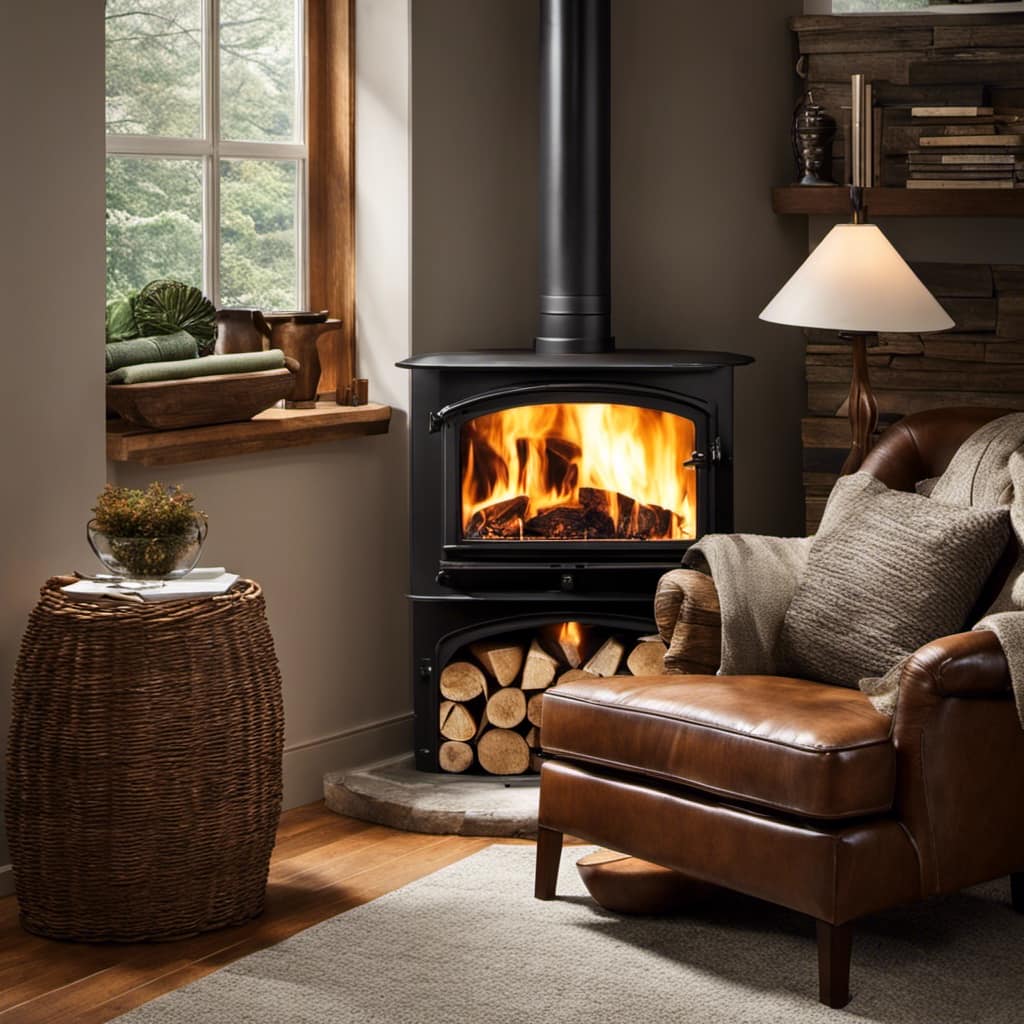
Installing the Wood Stove and Chimney System
Before starting the installation process, I ensure that I’ve all the necessary materials and tools, including a number of pipes and a chimney cap. Installing the stovepipe requires careful consideration of the right chimney components to ensure proper ventilation and safety.
Firstly, I measure the distance from the stove to the chimney and cut the stovepipe accordingly, making sure to leave enough clearance from combustible materials. Next, I attach the stovepipe to the flue collar on the back of the wood stove, using screws or clamps for a secure connection.
It’s crucial to choose the right chimney components, such as a thimble for the wall penetration and a chimney cap to prevent rain and debris from entering.
Once everything is properly installed, I transition into the next section where I’ll discuss testing and maintaining the wood stove.
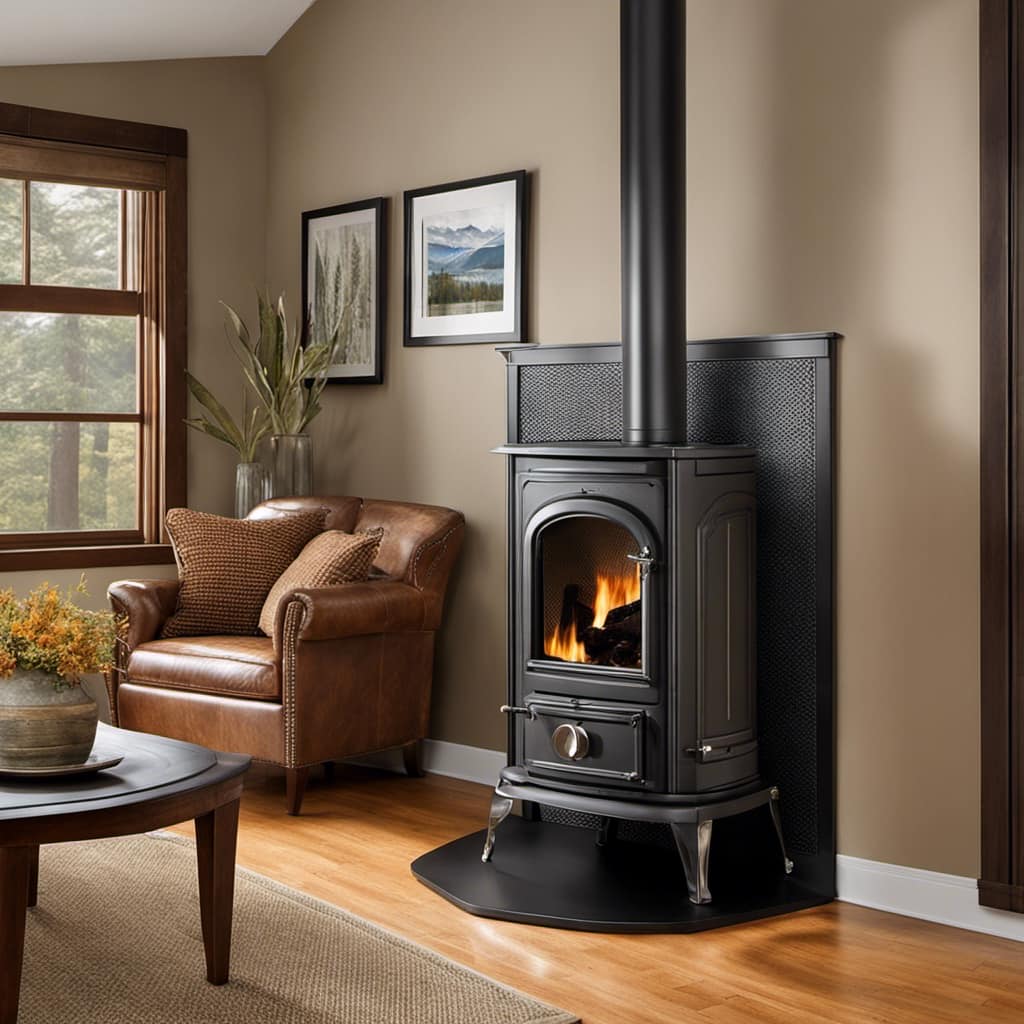
Testing and Maintaining Your Wood Stove
During the winter months, I consistently check the flue and chimney for any signs of creosote buildup to ensure the safe and efficient operation of my wood stove. Cleaning techniques are essential to maintain the performance and safety of a wood stove.
Here are four tips to troubleshoot common issues and keep your wood stove in top shape:
-
Regular cleaning: Remove ash and debris from the firebox and clean the glass door to maintain clear visibility and prevent airflow blockage.
-
Creosote removal: Use a chimney brush to remove creosote buildup from the flue and chimney. Creosote can be highly flammable and can lead to chimney fires if not removed regularly.
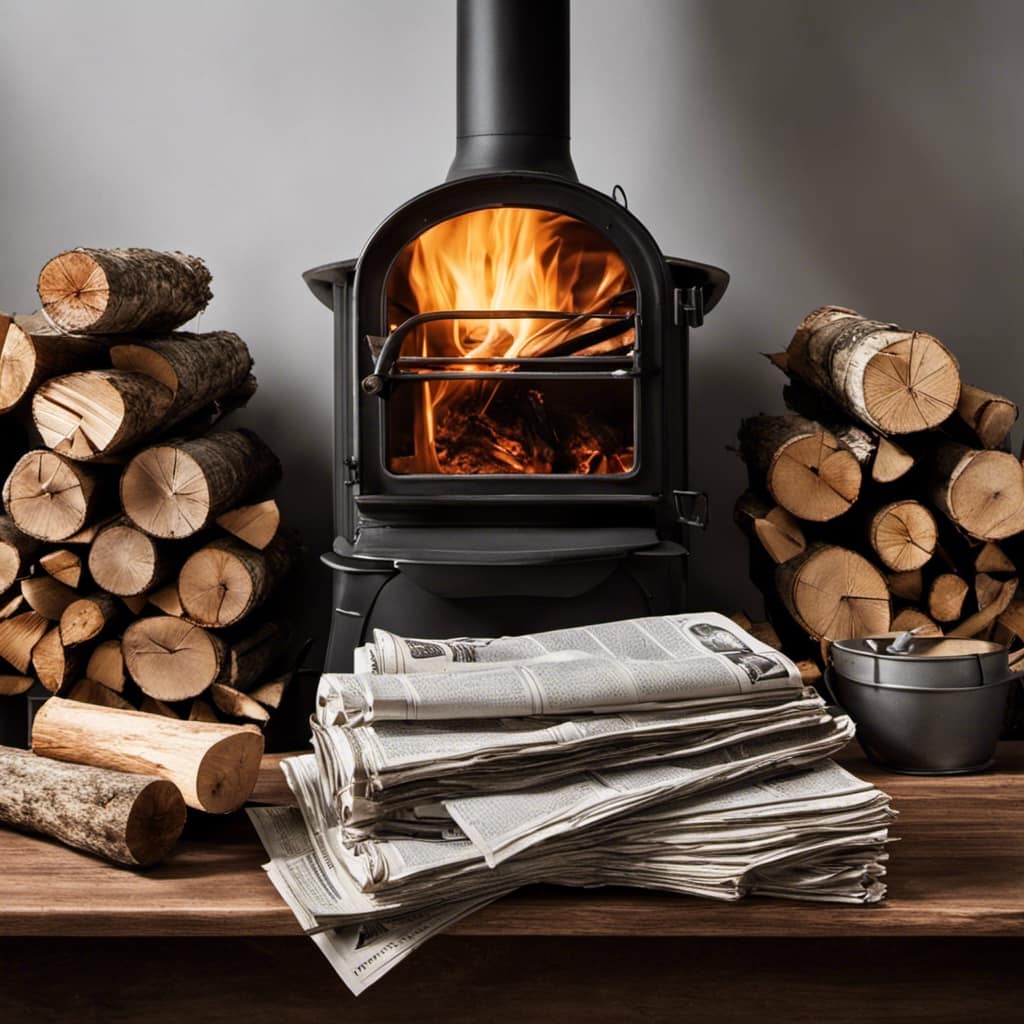
-
Air intake inspection: Check and clean the air intake system to ensure proper combustion and efficient burning of wood.
-
Gasket replacement: Inspect and replace worn-out gaskets to maintain a tight seal, preventing smoke leakage and ensuring optimal heat output.
Frequently Asked Questions
What Are the Potential Dangers or Risks Associated With Installing a Wood Stove in an Existing Fireplace?
Potential dangers and safety risks are present when installing a wood stove in an existing fireplace. It is crucial to consider factors such as improper ventilation, fire hazards, and carbon monoxide poisoning during the installation process.
Are There Any Specific Building Codes or Regulations That Need to Be Followed When Installing a Wood Stove in an Existing Fireplace?
When installing a wood stove in an existing fireplace, it is essential to adhere to building code compliance and safety regulations. These regulations provide guidelines to ensure the installation is done correctly and safely.
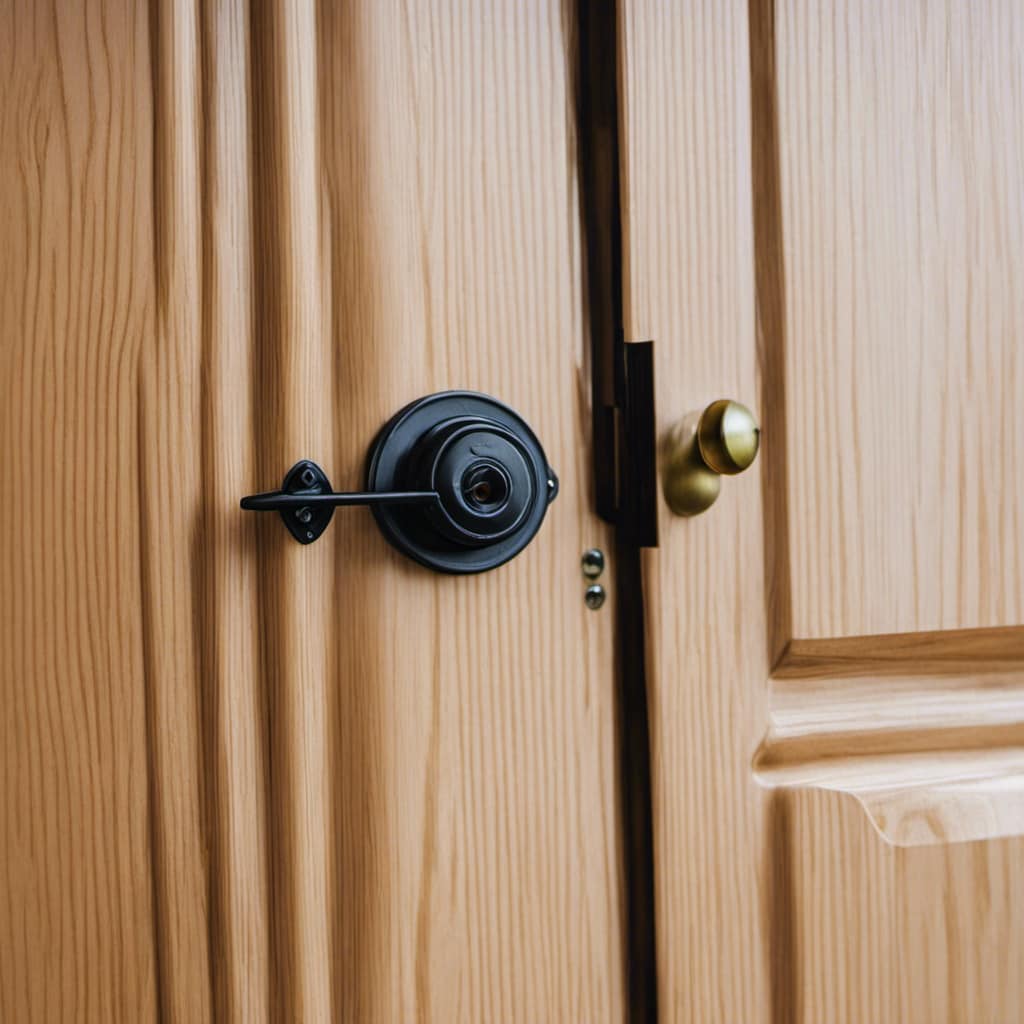
How Long Does It Typically Take to Install a Wood Stove in an Existing Fireplace?
Installing a wood stove in an existing fireplace can take anywhere from a few hours to a few days, depending on factors like the complexity of the installation, the condition of the fireplace, and any necessary modifications.
Can a Wood Stove Be Installed in Any Type of Existing Fireplace, or Are There Specific Requirements?
Yes, a wood stove can be installed in different types of existing fireplaces, but there are specific requirements. The necessary materials include a chimney liner, fireproof hearth pad, and proper ventilation.
Are There Any Additional Accessories or Equipment Needed for the Installation of a Wood Stove in an Existing Fireplace?
To install a wood stove in an existing fireplace, it is crucial to have additional equipment such as stovepipe, chimney liner, and a hearth pad. Safety precautions like proper ventilation and clearances should also be considered.
Conclusion
In conclusion, installing a wood stove in an existing fireplace can be a rewarding project that adds warmth and ambiance to your home.

By carefully assessing your fireplace, determining the right size and type of wood stove, preparing the area, and following proper installation procedures, you can enjoy the benefits of a cozy wood-burning fire.
Remember to regularly test and maintain your wood stove to ensure it operates safely and efficiently.
So go ahead and embrace the timeless charm of a wood stove in your home.
Growing up surrounded by the vast beauty of nature, Sierra was always drawn to the call of the wild. While others sought the comfort of the familiar, she ventured out, embracing the unpredictable and finding stories in the heartbeat of nature.
At the epicenter of every remarkable venture lies a dynamic team—a fusion of diverse talents, visions, and passions. The essence of Best Small Wood Stoves is crafted and refined by such a trio: Sierra, Logan, and Terra. Their collective expertise has transformed the platform into a leading authority on small wood stoves, radiating warmth and knowledge in equal measure.






